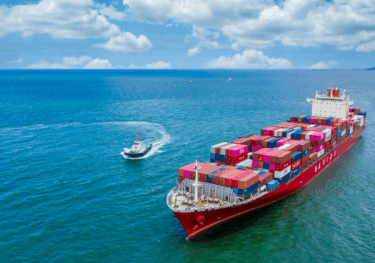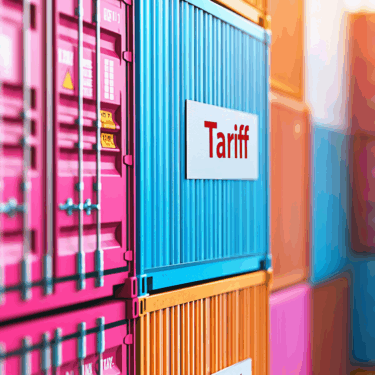Through the TradePrism: Making Sense of Global Trade Disruptions
Date: 10 July
Tariffs, shifting supply chains, and rising geopolitical tensions are redrawing the global trade map. Join our global trade and China experts as they unpack the forces behind today’s trade disruptions and discuss what’s next for cross-border flows. Powered by insights from our TradePrism forecasting platform, the conversation will explore recent developments, changes to the near- and long-term trade outlook and how businesses can navigate the increasingly fragmented world.
Register to Access the Webinar On-Demand: This webinar will be available to watch on-demand via our new platform, ON24. We encourage you to register even if you are unable to attend the live session. All registrants will receive a link to access the recording shortly after the event.
Missing Your Confirmation Email? Please check your junk or spam folders. To ensure you receive all future communications, kindly add our sender address to your safe list.

Ben Udy
Lead Economist, OE Australia

Ben Udy
Lead Economist, OE Australia
Sydney, Australia
Ben is a lead economist at Oxford Economics Australia working on the Australian Macroeconomic Service, and TradePrism. Prior to joining Oxford Economics ben has worked as a macroeconomic consultant in the private sector in Singapore and Australia and for the Treasury in New Zealand.

Harry Murphy Cruise
Head of Economic Research and Global Trade

Harry Murphy Cruise
Head of Economic Research and Global Trade
Sydney, Australia
Harry Murphy Cruise is the Head of Economic Research and Global Trade at Oxford Economics Australia. He leads the Australian Macroeconomic Service and global trade initiatives, including TradePrism. Harry frequently provides insights to major media outlets, including CNBC, BBC, Reuters, and the Wall Street Journal. His research primarily focuses on global trade and investment flows, with particular interest in the challenges and opportunities of economic decoupling.
Harry holds a master’s degree in international and development economics from the Australian National University and a bachelor’s degree in arts and commerce from Monash University. He is a PhD candidate at ANU, exploring the role of China’s diverse households and firms in the country’s economic transition.
Prior to joining Oxford Economics, Harry was the Head of China and Australia Economics at Moody’s Analytics. He was previously responsible for Australian state and territory analysis at Deloitte Access Economics.

Louise Loo
Head of Asia Economics

Louise Loo
Head of Asia Economics
Singapore
Louise Loo is the Head of Asia Economics at Oxford Economics. She leads the firm’s macroeconomic research and forecasting efforts on Greater China.
Prior to joining Oxford Economics, she was a senior economist at Morgan Stanley and Goldman Sachs. At Goldman Sachs, she was also a long-term advisor to China Ministry of Finance and the China-based Asian Infrastructure Investment Bank (AIIB) with regards to their sovereign credit ratings.
Louise is a regular contributor to various international financial news outlets and has earned Economics and public policy degrees with Sheffield University and Columbia University.
Tags:
Related Content

Understanding Australia’s Goods Trade Dynamics in 2025
2. Explore Australia's goods trade dynamics, with rising exports and falling imports. Learn how global demand impacts the trade balance and future projections.
Find Out More
The Future of Trade: Tariffs, Taxes, and Economic Trends
Amid ongoing global trade uncertainty, business leaders are struggling to plan ahead as new tariffs continue to reshape the market. Even so-called “locked-in” tariffs are proving to be temporary, adding to the unpredictability. Firms are cautious, waiting for clarity before committing to major investments. As global trade volumes decline, the importance of understanding every relevant trade tariff and accurately applying the correct HS code to imported goods becomes even more critical for managing costs and compliance.
Find Out More
Fresh tariffs redraw trade map
Trump’s latest tariffs favour Australia and Singapore with unchanged 10% rates, while Brazil faces a sharp 50% hike. India, Vietnam, and Bangladesh continue to face some of the world’s highest effective tariffs despite recent declines.
Find Out More
Brazil Lula and Trump engage in a trade arm wrestle
Our Global Economic Model simulations suggest that a permanent 40ppt tariff hike on US imports from Brazil would have limited impacts to the Brazilian economy.
Find Out More